A lot of advantages compared to radiator heating is the installation of a heated floor under the tile. Which is the best heating option to choose depends on many factors. The category of tiles, the height of the room and the cost of materials matter. In some cases, underfloor heating is considered as a source of additional space heating in addition to the already existing option.
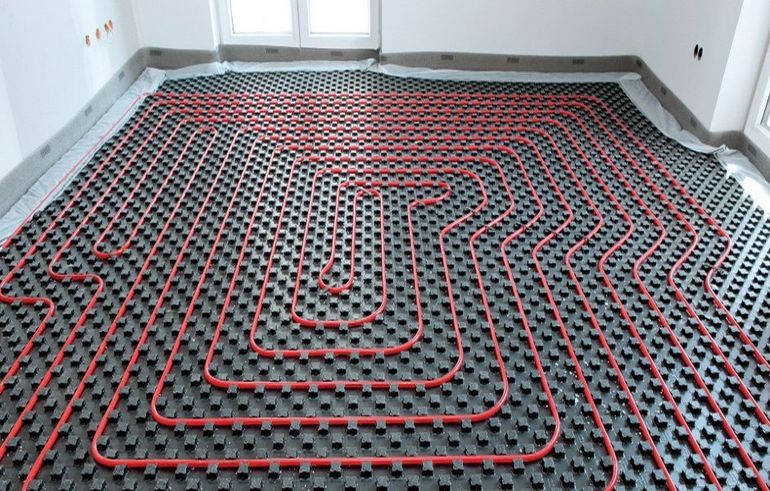
Underfloor heating
The air warms up to a height of 2 m above the base; its uniform distribution ensures favorable indoor conditions. Warm air flows block drafts and are the key to health for family members in the cold season. Underfloor heating systems are equipped with temperature controllers and allow you to make the right choice of a comfortable climate.
Different designs of underfloor heating are used:
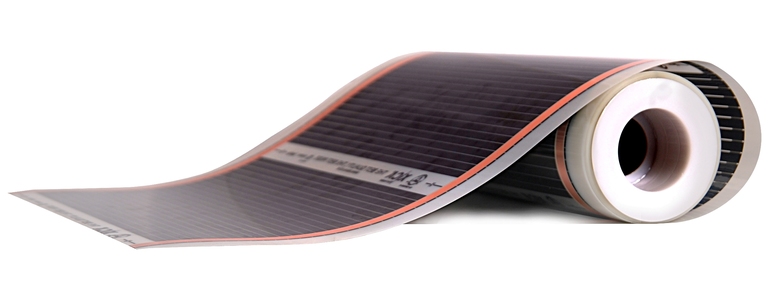
- electric cable;
- electric film;
- water.
Cable heating
Used as a primary or secondary source. A screed of cement-sand mortar is performed after laying the electric energy carrier, as a result, the base rises by 5-6 cm. The layer reduces the height of the room, but accumulates heat and saves resources.
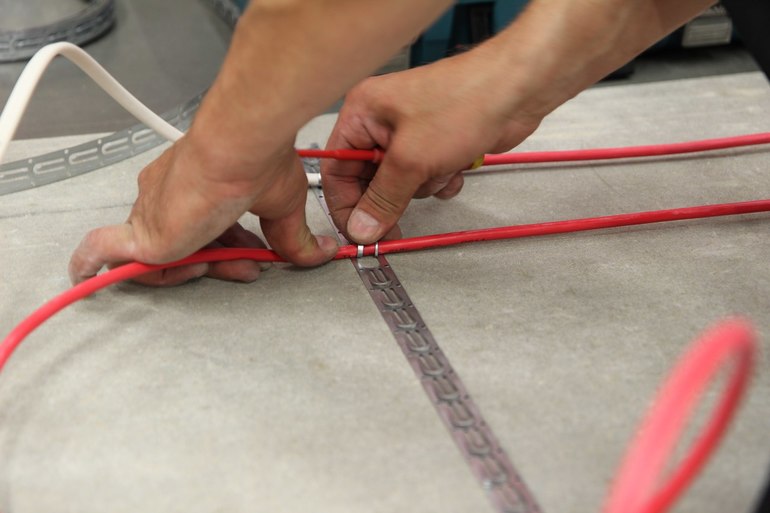
Cable placement options:
- single core wiring;
- two-core laying.
A single-core type device is cheaper, but the cable is sure to return to the heat controller. A two-core version is intended for placement in a room of various layouts. Heating is included in the work after the screed hardens and dries. If the cable structure is sold in already formed mats, then the screed is not a prerequisite.
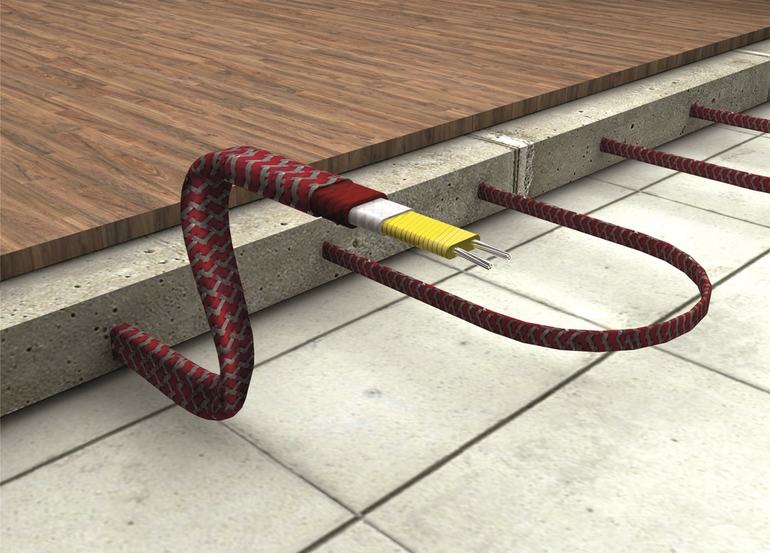
Mats are a thin wire that attaches to a polymer mesh. The cable is located in a certain sequence, at the edges of the mat protrude its ends to connect power. The material is durable and well insulated, it is placed on an old screed, if it meets the requirements. In this case the base rises only 1.5−2 cm.
Tiles are installed on the mats, while using glue, which is applied to the surface of the mats. When choosing sizes, the correct calculation of the area is done. Pieces from the finished carpet are not cut, the size is taken with rounding to a lower value.
Cables or mats are not laid over the entire area of the room, but only in places that are not cluttered with furniture.
Infrared Film Option
The heating coating consists of plates that are sealed in a film of polyethylene for waterproofing. The device of the film floor does not change the height of the room, while the heat loss is negligible, there is no noise during heating.
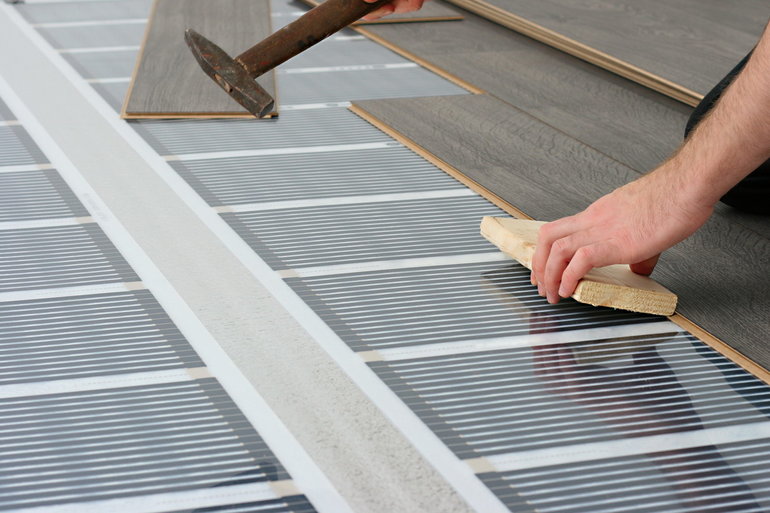
The types of film coating differ depending on the material of the heating element:
- carbon;
- bimetallic.
Under the tile, only the carbon type is used. It is resistant to corrosion, and the parallel connection of wires allows you to disable only a portion of the floor that is damaged. The system is connected to the network, heating is regulated by a switch. Before laying the film on the screed, a substrate is placed that reflects infrared rays towards the room. Second layer needed is a fiberglass mesh with a clearance of no more than 3 cm.
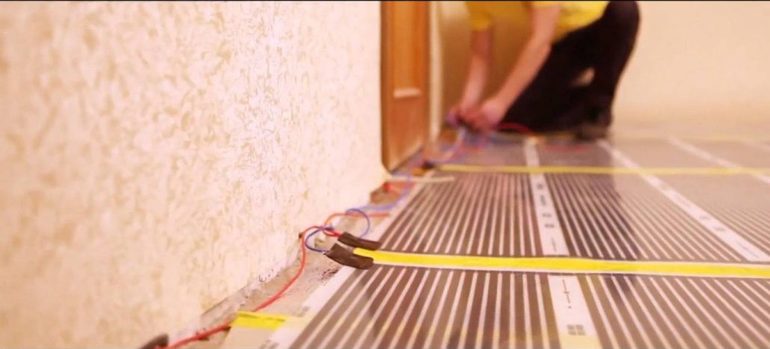
When choosing, heating parameters that differ in different systems are taken into account. They also pay attention to the width of the canvases; for large areas, a transverse roll size of 1 m is taken. The temperature regulator is not included in the sales package and must be purchased separately.To select it, the power of the installation is calculated.
It is calculated by multiplying the power of a square meter of film (150 W) by the area of the room, which is closed by a warm floor.
Water pipe device
This type of underfloor heating saves electricity and works perfectly in large areas. In multi-apartment buildings that are connected to a centralized heating system, water pipes in a separate housing provoke interruptions in the circulation of energy throughout the house.
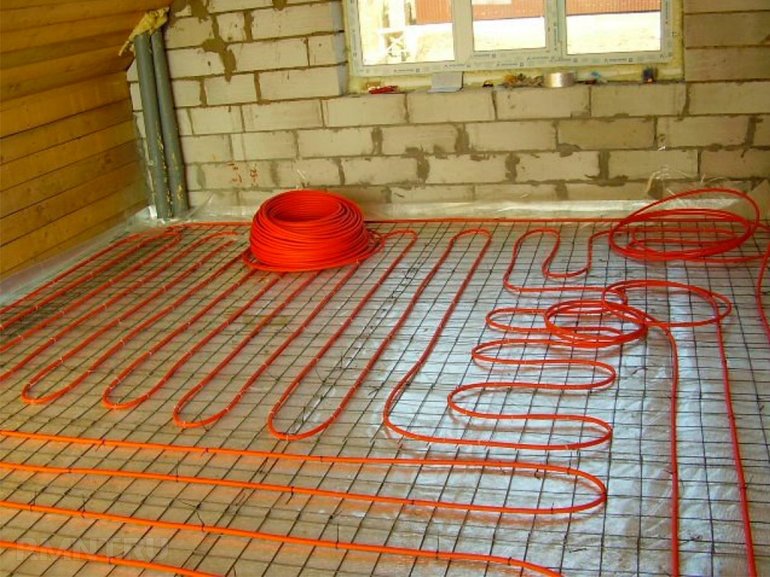
In past years, metal pipes were used to pass water under the floor, modern systems are made using metal-plastic moldings. For the installation of the system requires the installation of a collector and pump. High-quality pipes increase the service life and reliability of the structure.
A cement-sand screed is arranged over water floors, the thickness of which takes into account the size of the pipe plus 4 cm above it. Therefore, the base in the room rises 6-8 cm. This type of floor is placed under the tile and other coatings and evenly heats the area. The disadvantage is the complex installation of the system, the purchase of a pump. It is possible to independently carry out such floors if the owner has the skills to work with heating systems.
Water heated floors in recent years are rarely used, especially in apartments, so a good solution for tiles is a film or cable electric option.





Alas, no comments yet. Be the first!